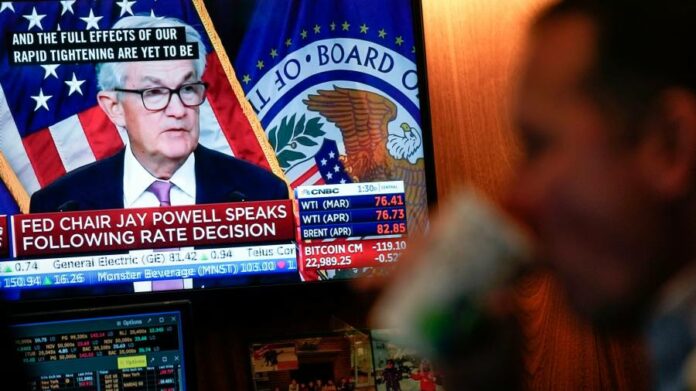The writer is president of Queens’ College, Cambridge, and an adviser to Allianz and Gramercy
It took time but it is finally happening. Recent US economic data releases are inserting more forcefully the notion of “sticky inflation” into economic discussions. This comes after too many people — not just market participants and policymakers, but also a few economists — were inclined to prematurely declare victory in the important battle against the damaging price increases.
The evolving deliberations, however, should go well beyond the immediate dynamics of price formation. They should also extend to structural issues, as tricky as these are.
The initial surge in inflation was driven, first, by high food and energy prices and, subsequently, by broad-based price increases in the goods sector as a whole. Several items overshot, such as used cars, thereby setting the stage not only for a moderation but also an outright drop in their prices. As a result, too many rush to embrace continuous and orderly disinflation as the dominant theme of 2023.
This reassuring picture seemed supported by January data releases on inflation and economic activity, fuelling the “immaculate inflation” narrative and revitalising some members of Team Transitory who had been vocal in 2021 before being humbled by the persistent inflation.
Federal Reserve chair Jay Powell mentioned disinflation 11 times in the press conference that followed the February 1 policy announcement. He pointed markets to the upcoming Fed minutes for details on a possible dovish pivot in policy. Investors priced in not just a lower peak policy rate for this cycle but also cuts for the second half of the year. Stocks, bonds and Bitcoin rose in price.
The rush to a comforting narrative reflected a mix of cognitive traps and unusual economic fluidity. It could not, however, withstand the subsequent upside data surprises for inflation, jobs and activity. Nor could it withstand last week’s release of minutes that said very little, if anything on a pivot and disinflation. Equities slid back while bond yields spiked higher.
With measures of expected inflation also rising, Fed officials are being forced back to a more cautious tone with some even suggesting reversing the February 1 downshift in rate increases from 0.50 to 0.25 percentage points.
There is now growing recognition that there is a limit to goods disinflation and that price increases in the services sector may prove quite stubborn. This better understanding of short-term inflation dynamics is a necessary step to avoid the Fed falling far behind for the third time in two years — a pattern that fuels the combined threat of persistently high and destabilising inflation, recession, job losses and widening inequality of income and opportunity.
It is not sufficient, however. It needs to be accompanied by a stronger policy architecture and a constructive evolution in the policy debate away from the Fed being “the only game in town”, chasing an increasingly elusive and outdated inflation target.
In my opinion, the fundamental medium-term characterisation of the US economy has shifted from one of deficient aggregate demand to one of deficient aggregate supply. Yes, the pandemic contributed to this but there is a lot more going on.
Some of the driving forces include the overdue green transition in energy and elsewhere, changing globalisation, a multiyear quest to enhance supply chain resilience and a labour market that struggles to fill a record excess of job openings.
Those who agree the supply side of the domestic and global economy is most deterministic for inflation, growth and social outcomes immediately confront two tricky issues. One is what to do about a Fed inflation target that is too low for such a world and yet hard to revise given that the world’s most important central bank has already undermined its credibility. The second is how to better incorporate policymaking agencies beyond the Fed in a co-ordinated fight against inflation.
Congress needs to help: first, by enhancing Fed accountability and requiring it to update its policy framework, as well as follow the example of the Bank of England in structurally inserting outside views in its policy formulation process; and second, by formulating a more comprehensive approach to easing supply side constraints.
The recent US policy advances on energy transition issues provide a foundation to build on for a future of high, inclusive and sustainable growth, together with genuine financial stability. Let’s hope the administration can secure sufficient congressional bipartisanship to take advantage of this important window.






